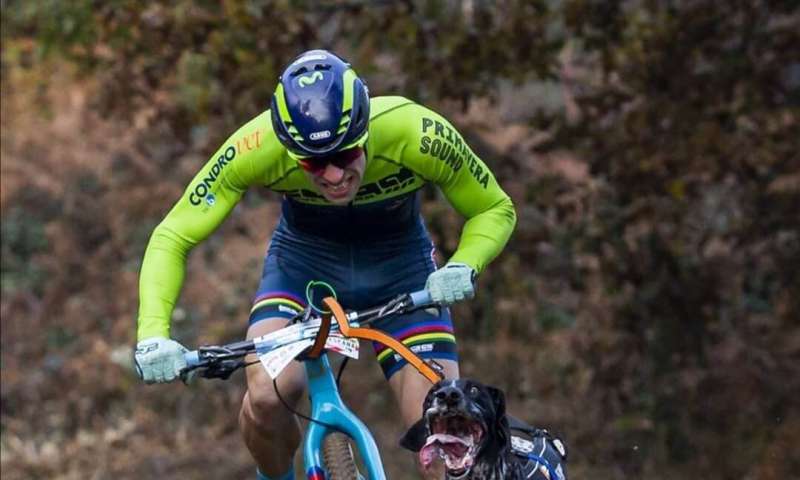New method helps detect heart damage in top-level competition dogs

Frequent high-intensity exercise entails cardiac remodeling both in humans and animals. In dogs, especially those used for top-level competition, it is of great interest to learn whether they develop the so-called athletic heart syndrome. In order to improve the clinical monitoring on behalf of the veterinarians who tend to these animals, professor at the Faculty of Veterinary Science at the CEU Cardenal Herrera University (CEU UCH) of Valencia, Milagros Benito, has proposed a cardiac assessment protocol based on an electrocardiographic and echocardiographic examination of these dogs before and after a racing effort, seeking an early detection of the cardiac indicators that differentiate athletic heart syndrome from other cardiac diseases.
CEU UCH professor Milagros Benito says, "The physical examinations, which are commonly conducted on these athlete dogs on behalf of their veterinarians cannot prematurely detect ventricular remodeling in its initial stages. This is why we consider the echocardiogram an essential part of the clinical evaluation of these animals, to prematurely detect any pathological cardiac alteration and differentiate it from other adaptations linked to the physical effort if these canine athletes."
Specifically, the study by Professor Benito, published in Animals and conducted in collaboration with French veterinarian Laure Boutigny, has focused on a very specific type of canine: the greyster. This breed is known for its excellent results in competitions such as 'bikejöring', a type of mushing, or dog-pulled sledge, that is very demanding from the point of view of the intensity of the aerobic exercise required, as the dogs that take part can reach speeds of up to 42 kilometers per hour.
"greysters are a cross between the German pointer and the greyhound, which often take part in these mushing competitions, both on snow and dryland, in which they are good competitors. Before and after each race they undergo clinical examinations that include cardiovascular parameters, which are the ones we have revised in this study to flesh them out," says Professor Benito.
Adding the echocardiogram
The research included the full monitoring of 22 greyster hounds in competitions, comparing changes to their blood pressure, heart rate and the variables of the echocardiogram results before and after each race. The study establishes which changes to these parameters are a result of the physical effort of the competition, and which can be an indicator of a possible cardiac disease, in order to treat it as soon as possible.
"The obtained results show the usefulness of adding the echocardiogram to clinical cardiac evaluation: It can be very useful for veterinarians who look out for the well-being and health of these animals, as it would allow them to identify the existence of physiological adaptative changes (athletic heart syndrome) or whether there are signs of other cardiac diseases which, as happens in humans, must be identified as soon as possible, especially given that these animals conduct intense physical exercise," highlights the author of the research.
Canine sport, without risks
Milagros Benito, veterinary science professor and member of the Sport Medicine Department of the Veterinarian Clinical Hospital of the CEU UCH, is one of the five international experts who comprise the first animal welfare committee (Welfare and Ethics in Sled Dog Sports), created by the International Federation of Sleddog Sports (IFSS). Professor Benito is also part of the Mushing committee of the Spanish Federation of Winter Sports (RFEDI) and is a member of the animal welfare committee of the Official School of Veterinarians of Valencia (ICOVV). She has broad experience in veterinarian assistance to dogs that take part in the most important mushing competitions worldwide, including Lekkarod in the Alps.
Milagros Benito has collaborated with the world champion and member of the national mushing team of the RFEDI, Victor Carrasco, caring for his greyster, Rona. In all these activities, she is tasked with "looking out for the well-being of the dogs who, as the great athletes that they are, deserve all our effort to guarantee their health. In other words, to guarantee sport without risks, as happens in other sports disciplines."
More information: Mila Benito et al. Cardiovascular Clinical Assessment in Greyster Dogs in Bikejöring Training, Animals (2020). DOI: 10.3390/ani10091635
Provided by Asociacion RUVID





















